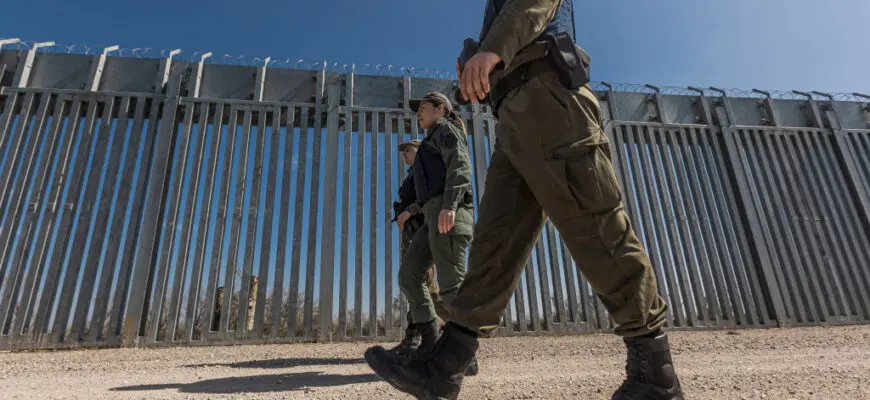Europe is intensifying its crackdown on migration, preparing a new E.U. Pact designed to harden borders and accelerate deportations. This decade-long strategy of building a “fortress Europe” carries significant moral and economic risks that threaten the continent’s long-term stability.
The forthcoming E.U. Pact on Migration and Asylum, expected next year, represents a major overhaul intended to harden border procedures, accelerate deportations, and introduce other restrictions. Although U.S. figures like Donald Trump and MAGA figures often warn that Europe has lost control of migration, the reality is that the continent has spent the last decade building a large, often invisible fortress. This effort includes tightening asylum procedures, striking deals with transit countries (including Turkey, Libya, Tunisia, and Egypt), and deploying unprecedented levels of surveillance technology.
These measures have yielded tangible results. Across the continent, irregular crossings have fallen sharply since the peaks of 2015–2016 and continued to decline after the post-pandemic rebound. The E.U.’s border agency, Frontex, reports that total irregular crossings in 2024 were 40% lower than the previous year, with further decreases in the first half of 2025.
Furthermore, governments across Europe are responding to the threat of the far right by making legal migration harder—seen in Germany tightening general migration rules and Sweden restricting residency requirements—leading to a significant drop in overall migration in 2024.
On the surface, this appears to be a policy and political success. European leaders can assure anxious voters they have “taken back control” of borders while ostensibly maintaining humanitarian commitments. This enables them to claim moral superiority over policies seen in the U.S., such as those employed by the Trump Administration, while simultaneously attempting to fend off the threat of the far right. However, this reassuring facade masks a less stable reality, as Europe’s new fortress lacks solid economic or social foundations.
The primary issue is moral and humanitarian. The crackdown has not stopped movement; it has only made journeys longer, costlier, and riskier. More than 2,000 people died or went missing attempting to cross the Mediterranean in 2024. By outsourcing border control to countries like Libya or Tunisia, Europe often subcontracts human rights abuses. While the E.U. officially condemns practices like illegal pushbacks, they continue to be used in practice to keep arrival numbers down.
Ultimately, the policy is undermined by economic and political contradictions. European populations are aging and shrinking due to longer lifespans and lower birth rates, creating massive labor shortages. Germany requires around 300,000 new workers annually, and Italy and Spain face similar needs. The OECD has long argued that increased immigration is essential for addressing short-term labor gaps and boosting long-term economic growth.
Paradoxically, governments are well aware of this necessity. Italy’s far-right administration has quietly expanded work permits for non-E.U. migrants, and Germany is reforming its points-based immigration system. Yet, these pragmatic steps are often overshadowed by the louder politics of deterrence. Fearing that admitting the need for more migrants will empower the far right, leaders create paralysis: a continent that simultaneously signals, “we need you” and “keep out.” This unstable equilibrium provides the illusion of control while guaranteeing future political and economic instability.
Broadly, Europe faces three main choices:
The first is to maintain and intensify the “fortress Europe” policy. This route will stifle growth, strain public finances, and erode the capacity to fund the prized welfare state. Crucially, it will not marginalize the far right but instead give them further ammunition, alienating existing populations of migrant origin and damaging social cohesion.
The second option is the traditional European approach: muddling through. This results in an unstable mix of crackdowns, loopholes, and continuous crises. Under this scenario, irregular migration continues, driven by external desperation and internal labor demand, met by ad hoc deals, emergency summits, and moral panics. This approach is politically messy, administratively costly, inhumane, and equally benefits the far right.
There is a better, third option. It requires officials to first acknowledge that Europe needs migrants. This involves building better, more flexible pathways for work and refuge, significantly investing in integration, and revamping the asylum system to be swift, efficient, and humane. While managed migration cannot eliminate irregular flows entirely, it can improve a difficult situation.
None of this is easy. Even well-designed systems face populist backlash in uncertain economic times. Defeating the populist right will require restoring productivity growth and boosting living standards—a goal for which openness to immigration will be necessary but not sufficient. Since the factors driving migration will not vanish, and “open borders” is neither politically nor practically viable, border enforcement and enforced removals for those without legal status will always be necessary. However, pretending that migration can or should be stopped is a dangerous illusion.









